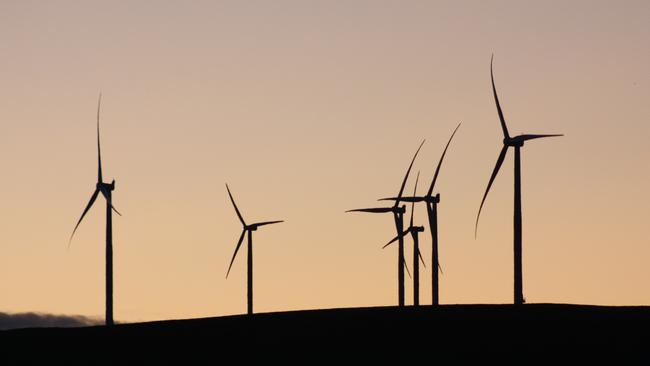South Australian wind farm operators hit with legal action over 2016 statewide blackout
The Australian Energy Regulator has taken legal action against four wind farm operators over the 2016 statewide blackout that caused mass chaos across SA.
- What happened after the SA statewide blackout
- Entire state in blackout: How we reported the unfolding saga
- Pictures: SA superstorm and its chaotic aftermath
- Final report explains how SA blackout happened
- Finkel report for dummies: National energy plan explained
- Revealed: $550m plan to fix power crisis in SA
Four South Australian wind farm operators have been taken to court by the Australian Energy Regulator over the September 2016 statewide blackout, alleging it breached the national electricity rules.
The regulator alleges wind farms owned by subsidiaries of AGL, Neoen, Pacific Hydro and Tilt Renewables failed to ensure they complied with the required generator performance standard to withstand “certain disturbances”.
It also alleges they failed to provide automatic protection systems that would have enabled them to “ride through voltage disturbances to ensure continuity of supply”.
The statewide blackout was triggered after severe storms caused damage to transmission lines, leading to the drop out of wind generation.
AER chair Paula Conboy said the court action was brought on “to send a strong signal to all energy businesses about the importance of compliance with performance standards to promote system security and reliability”.

“These alleged failures contributed to the black system event, and meant that (the Australian Energy Market Operator) was not fully informed when responding to system wide failure in South Australia in September 2016,” she said.
In an announcement to the stock exchange, Tilt Renewables, which owns the Snowtown 2 Wind Farm, said it “believes it acted in good faith and in accordance with the applicable national electricity rules”.
“The company will continue to engage with the AER in an endeavour to resolve this matter,” Tilt said.
Federal Energy Minister Angus Taylor told FIVEaa part of the reason the blackout happened was because “wind farms weren’t generating as they should have”.
“If people are going to bring wind and solar farms into the system there is no problem with that, that is fine, but they have to be properly integrated,” he said.
“That means they’ve got to be backed up so when the wind doesn’t blow and the sun doesn’t shine we have the power we need to keep the lights on, to keep the wheels of industry turning, and they have to perform.

“They are standards that we now expect, we have actually set rules now up in the national electricity market to require these things and we expect those rules to be kept.”
Labor energy spokesman Tom Koutsantonis, who was energy minister during the statewide blackout, said the court proceedings were “excellent news”.
“It shows it wasn’t an issue of the nature of the generation but it was the settings,” he said.
“If the settings had been right this wouldn’t have happened.”
The AER released its investigation into the statewide blackout last December, saying it was “ultimately brought about by extreme weather, and in many cases unprecedented circumstances impacting energy infrastructure in South Australia”.
Acting state Energy Minister Rob Lucas said he couldn’t comment on matters before the courts, but said it was “clear” that SA was no prepared for the events that led to the statewide blackout under the former Labor government.
The wind farms alleged to have breached the rules include some of South Australia’s most prominent.
It found the market operator failed to comply with five clauses of the national electricity rules, but said those breaches did not contribute to the state going black.
The AER made five recommendations to prevent future widespread outages, including better weather monitoring processes, reviewing how weather events are classified and energy companies are informed of abnormal weather events.
It also recommended improving the training of AEMO’s operators and clarifying roles and responsibilities of AEMO and network providers in terms of how the system is restored.
